08. Covered Call and Covered Put: Reasons to Enter, Timing, and Risks Involved

A covered call is a common strategy that is used by investors having a portfolio of stocks. Rather than selling their portfolio if they feel that the market will remain flat or recede, they use the Covered Call strategy to earn from the options market without selling their portfolio stocks.
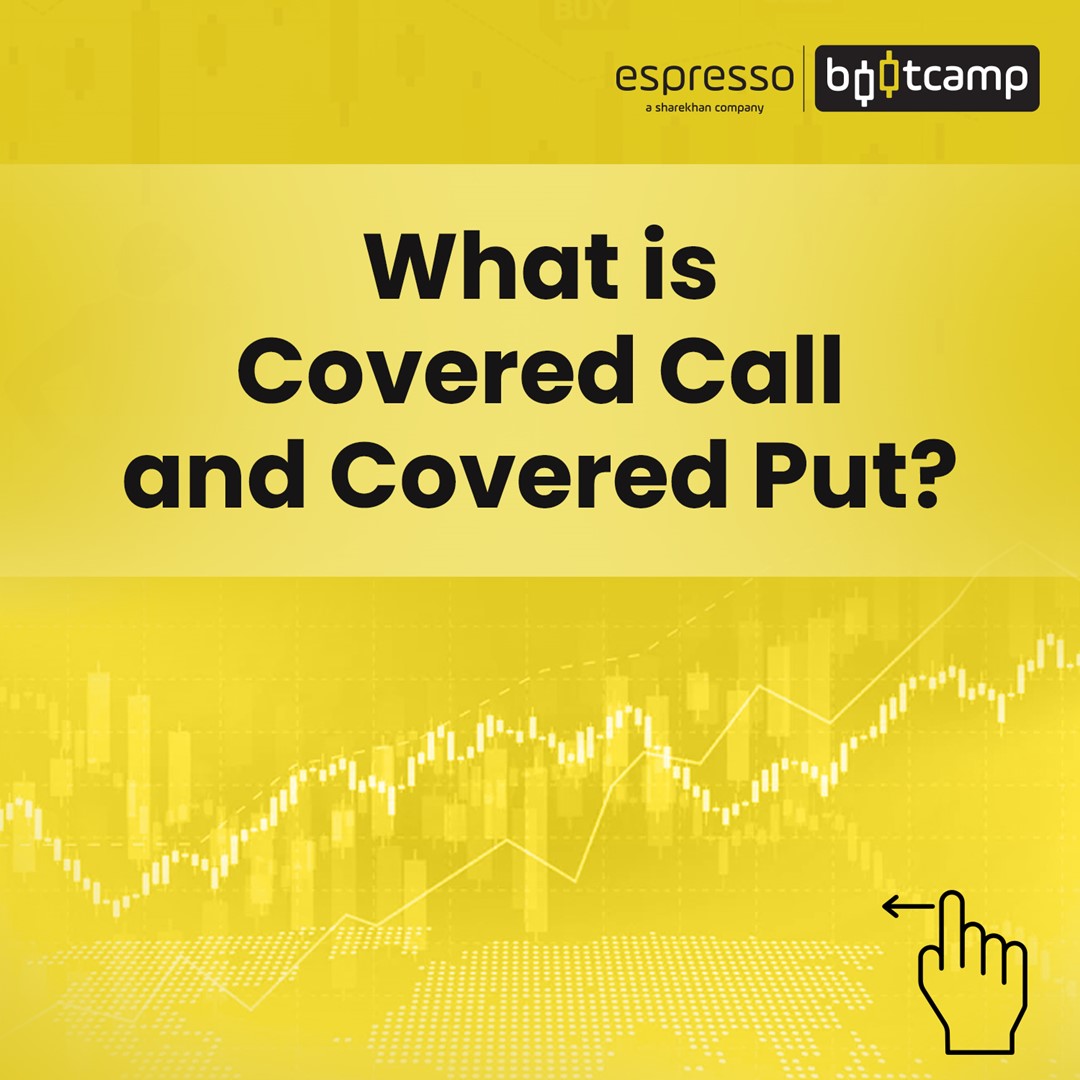
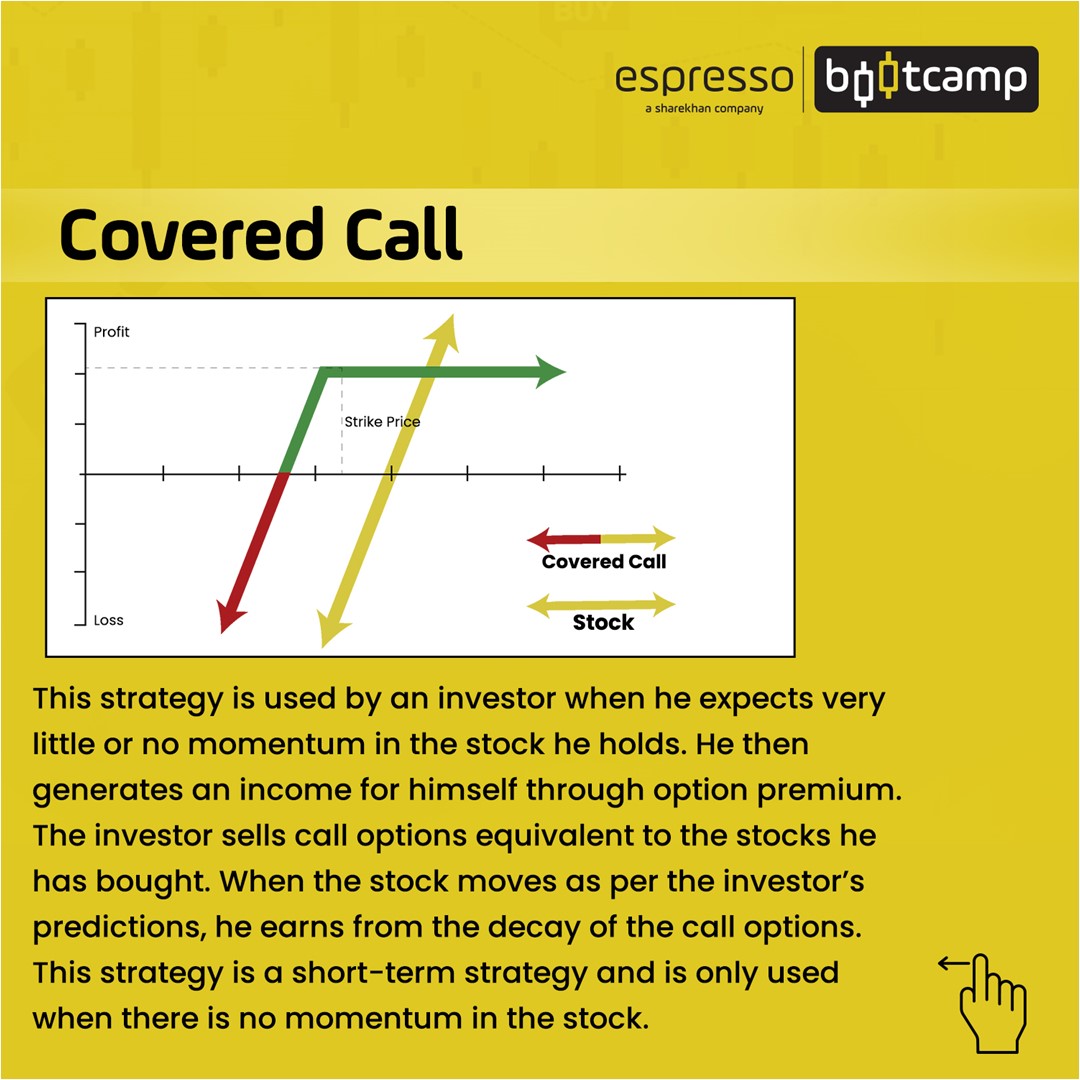
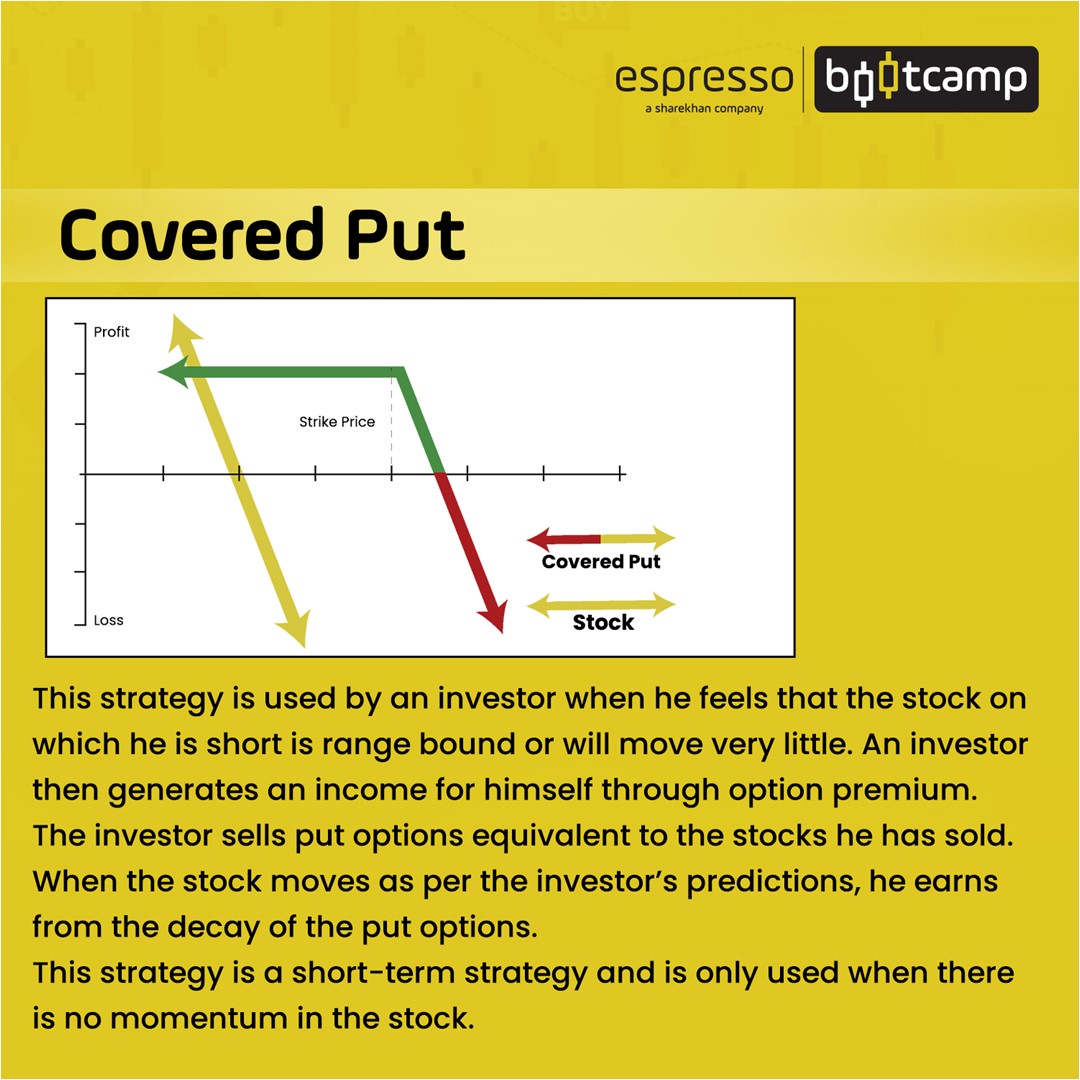
Even if the trader does not have any portfolio but is mildly bullish on the market, he can enter into a covered call position.
What is a Covered Call?
A Covered Call strategy has two components – a stock or a portfolio and a position in the options market, which is created by selling call options.
The call options sold can either be of the trader's stock or the index.
The position caps the profit potential of a long stock position since the call sold will start making losses beyond a point.
Payoff Diagram
The chart below shows the Covered Call position of HDFC Bank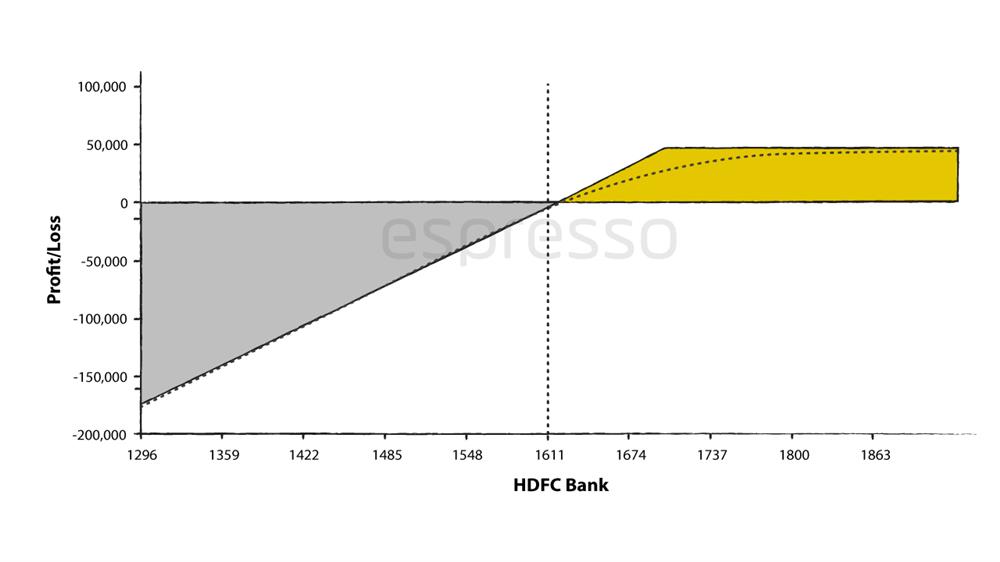 The strategy is created by buying 1 future of 29 DEC 2022 expiry.
The strategy is created by buying 1 future of 29 DEC 2022 expiry.
For the option leg of the trade, 1,700 call options of 29 DEC expiry are being sold. Note that this is the same expiry as that of the future.
As can be seen from the Payoff diagram, the profit potential of the strategy flattens beyond a point.
Maximum profit potential = Distance between the buying price of the stock and Short Call strike + Credit received.
The strategy breakeven = Stock buying price – credit received.
Maximum loss is unlimited
Reasons for entering into Covered Calls
Traders prefer covered calls over buying naked stocks because the short call option position makes money when the stock does not go anywhere. If the stock to be bought is meant to be kept in the portfolio for a long period, then selling call options will help reduce the acquisition price.
Which Options Strike to sell?
Traders select Strikes for selling call options depending on their risk profile and return expectation. Depending on these parameters, the strikes are selected to give the desired return on investment.
A very conservative trader will select option strikes corresponding to 10 deltas, while a relatively less conservative trader will prefer a 30 delta strike option.
Some traders select their options based on their relationship with the underlying stock. Say these traders are looking to make 2 percent from the trade every month, assuming the market does not reach the point where they have sold their call options. They will then look for option premiums that are around 2 percent of the share price.
In the HDFC Bank example above, where the stock is trading at Rs 1,610, the trader will be looking for strikes where the call option premium is around 90. This way if the stock does not move or fall, the trader makes a 2 percent return. But if the stock does move up, they benefit from the underlying stock’s move, plus they also get the benefit of the premium sold.
Which expiry should you select?
Most traders prefer to select call options from the current expiry, as liquidity in the next month’s expiry is low, especially in stock options.
When it comes to index options, it is advisable to select expiries that are 30-45 days away from the current date. This increases the probability of success and gives enough room for the trader to play with. Return on investment on such a trade is also better.
When to close a Covered Call position?
The covered call position can be closed when the share price crosses the strike price of the option since there is no point in keeping the position open as the maximum profit point is reached.
The sold option position can be squared off when the option has lost most of its value because of a fall in stock price or decay in option prices.
Risks involved in trading Covered Call
A sharp fall in the underlying stock or future prices would mean losses beyond the benefit from selling options. The trader in such a scenario can keep on booking profit in his sold Call option position and keep on moving the strike price lower or move the strike price to the next expiry.
Conclusion
A covered call is a good strategy for someone who is holding a stock portfolio and wants to earn returns or reduce his cost of holding. This can be done by selling OTM call options. The neutral to bullish strategy is commonly used by institutional players.
Covered Puts
A Covered Put strategy is a neutral to bearish strategy. Here you can trade your negative view on a stock or market by shorting the stock or the index and then combining it with a short Put position.
Payoff Diagram
The following payoff diagram is of a Covered Put strategy in HDFC Bank.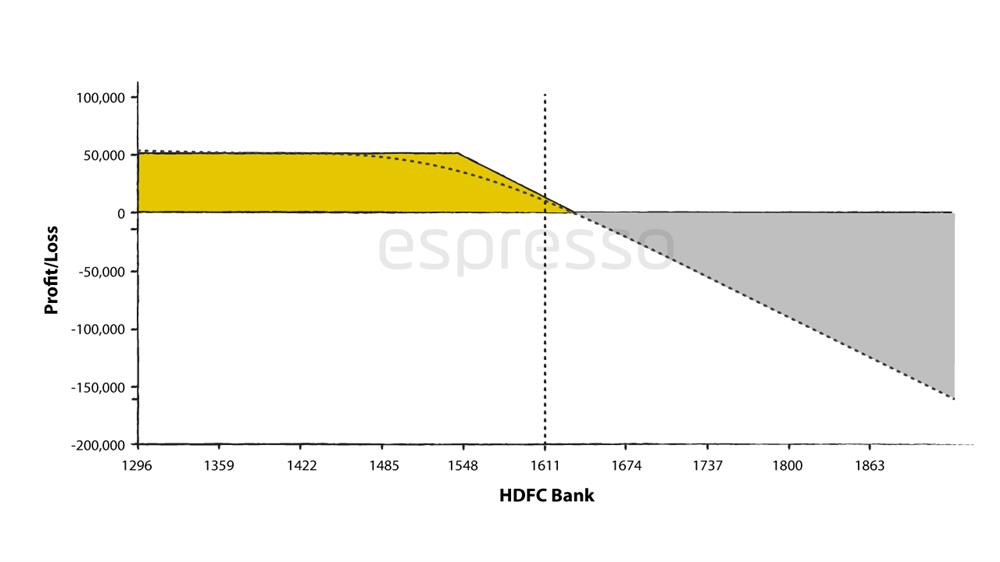
The strategy is constructed by selling an HDFC Bank future trading at 1,610 of 29DEC2022 expiry.
In the options leg, an OTM Put option of 1,540 strike is sold for 5.65.
The breakeven of the strategy is at a price at which the future is sold plus the premium collected by selling the Put option.
Maximum profit potential = Distance between the Stock buying price and Short Put strike + Credit received.
When to create a Covered Put trade
The strategy is created when the trader feels that the stock is either going to be range bound or will fall moderately from current levels.
Risk of creating a Covered Put Strategy
If the assumption of the share price falling does not go through and instead the price moves up rapidly, the trader can face unlimited loss. He can, to some extent, curtail his loss by booking profit in his sold put position and moving it higher or shifting it to the next expiry and gathering more premium.
Conclusion
A Covered Put strategy is similar to a Covered Call strategy but is used by traders when they expect the market to be neutral to bearish. It is, however, not as popular as the Covered Call strategy because most traders are uncomfortable shorting a stock or the market.
Things to remember
An investor having a portfolio of stocks who feels the market will remain flat or fall uses the Covered Calls strategy to earn from the options market without selling the stocks in the portfolio.
Even if the trader has no portfolio but is mildly bullish on the market, he can enter into a covered call position.
Covered Calls can also be taken by investors who don’t have a portfolio of stocks but who are slightly bullish on the market.
A Covered Put strategy is similar to a Covered Call strategy but is used by traders when they expect the market to be neutral to bearish.
A Covered Put strategy is a neutral to bearish strategy.
 0
|
0
|
 0
0
 Modules
Modules
 Watch
Watch 
